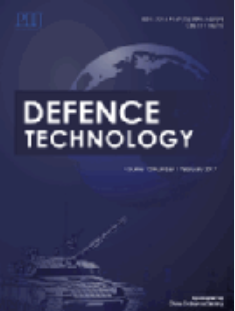轮床和破片飞行计算在爆炸中水射流速度的应用
IF 5.9
Q1 ENGINEERING, MULTIDISCIPLINARY
引用次数: 0
摘要
本研究探讨了通常用于预测金属碎片速度的格尼和碎片飞行方程在水射流行为建模中的应用。三种霰弹枪弹壳尺寸作为能量来源:2.59 g、5.83 g和7.13 g。测试了两种配置:标准(全桶水负荷)和“负8”(部分水负荷)。利用高速镜头捕获的水柱速度、Gurney模型(包括无限夯实和开放式配置)以及碎片飞行模型来评估预测精度。结果表明,电荷强度显著影响水柱速度,强度越高,水柱稳定性越好,速度保持越快。无限夯实的Gurney模型能很好地预测实验速度,对于标准电荷的误差仅为1.4%,对于负8电荷的误差为2.8%。此外,我们还观察到了一些有趣的动态变化,比如喷流高度上升1-2°,以及后轮超过前轮。这些发现对于优化聚丙烯腈干扰剂、提高高速流体应用和爆炸破坏系统的性能具有重要意义。本文章由计算机程序翻译,如有差异,请以英文原文为准。
Application of gurney and flight of fragment calculations for water jet velocities in explosive applications
This study investigates the application of Gurney and flight of fragment equations, typically used to predict metal fragment velocities, in modeling the water jet behavior. Three shotgun cartridge sizes were used as the energy source: 2.59 g, 5.83 g, and 7.13 g. Two configurations were tested: standard (full-barrel water load) and "negative 8" (partial water load). High-speed footage captured water column velocities, and Gurney models, including infinitely tamped and open-faced configurations, combined with the flight of fragment model were used to assess prediction accuracy. Results showed charge strength significantly affects water column velocity, with higher strengths yielding greater stability and velocity retention over distance. The infinitely tamped Gurney model closely predicted experimental velocities, deviating by as little as 1.4% for standard charges and 2.8% for negative 8 charges. Additionally, interesting dynamics such as a 1–2° rise in jet height and the rear overtaking the front was observed. These findings have significant implications for optimizing PAN disruptors and enhancing performance in high-velocity fluid applications and explosive breaching systems.
求助全文
通过发布文献求助,成功后即可免费获取论文全文。
去求助
来源期刊

Defence Technology(防务技术)
Mechanical Engineering, Control and Systems Engineering, Industrial and Manufacturing Engineering
CiteScore
8.70
自引率
0.00%
发文量
728
审稿时长
25 days
期刊介绍:
Defence Technology, a peer reviewed journal, is published monthly and aims to become the best international academic exchange platform for the research related to defence technology. It publishes original research papers having direct bearing on defence, with a balanced coverage on analytical, experimental, numerical simulation and applied investigations. It covers various disciplines of science, technology and engineering.
 求助内容:
求助内容: 应助结果提醒方式:
应助结果提醒方式:


